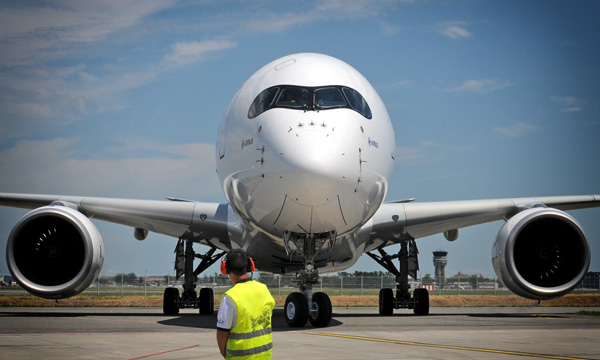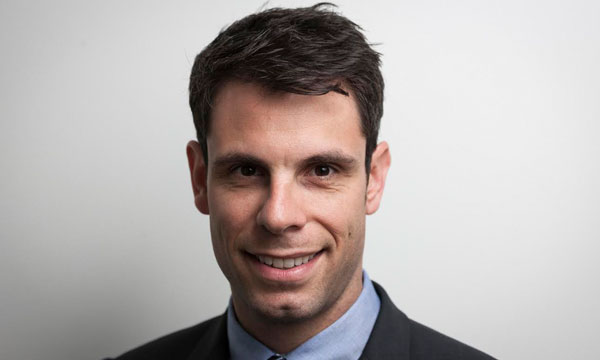Why Is AKKA Strengthening Its Airworthiness Activities with The Latest Generation Of Commercial Aircraft |
| Interview by Romain Guillot |
|
|
03 DEC 2020 | 1139 words
|
 |
© Le Journal de l'Aviation - All rights reserved |
|
|
|
While aftermarket services are logically very deeply impacted by the air transport crisis due to the COVID-19 pandemic, we spoke with Pierre-Yves Lazies, Vice President Aircraft Support & Operations at AKKA. He analyzes for us the current challenges of the sector and explains to us some of the opportunities that arise for the engineering consulting and R&D services group.
How is AKKA doing in this unprecedented situation which is having a strong impact on the aerospace industry?
Like all aviation and aerospace players, the AKKA group is suffering from the current unprecedented situation. Activities related to flight operations and cabin reconfigurations are particularly affected. However, we see this crisis as a real opportunity to re-challenge the "make or buy" strategies established by the airlines.
Modification activities, in particular on the avionics side, are continuing, because some lessors and some airlines take advantage of this, for example, to comply with mandates.
On the other hand, aircraft airworthiness activities (CAMO) are growing strongly, in particular thanks to aircraft storage issues. AKKA relies on 25 years of experience and has a solid expertise to support our customers on issues related to continuing airworthiness during storage, and optimized maintenance programs.
Our customers trust us and we have already welcomed several dozen aircraft under our CAMO in recent months.
What analysis do you make of the situation of the air transport today?
Global air traffic remains greatly reduced with load factors still low, and airlines are struggling to cover their costs.
At the same time, many leased aircraft are not operated and are stored in more or less acceptable conditions. As long as these remain under the responsibility of the airlines, the lessors are saving the costs of storage, maintenance, and airworthiness management.. Moreover, as Europe faced a second wave, repossessions will most certainly accelerate in the coming months, with bankruptcies and fleet reductions imposed on airlines in order to survive.
What we are also observing at the moment is that lessors tend to leave their planes with the airlines until they have a sufficient level of certainty about their viability, and they will trigger recoveries depending on opportunities which will arise from other operators in a more robust situation. Unfortunately, I think we haven't hit the storage peak yet.
Are there still any opportunities on the cabin retrofit market, and in particular on single-aisle aircraft?
We believe it. However, we observe very cautious approaches, especially as to the size of the modification. On the other hand, lessors know that the law of the fastest will prevail and speculations have already started to have the right aircraft at the right time.
Did you mention unacceptable storage conditions?
During the winter season, aircraft are being stored in conditions that are not ideal. Humidity on avionics boxes worth hundreds of thousands of dollars, batteries, electrical systems ... this will really cause problems if the storage conditions are not nominal.
Many aircraft are stored everywhere and are the responsibility of the airlines and not the MROs. When the traffic will resume, it will be necessary to put procedures in place to bring back them into service with appropriate checks for security reasons. The human factor will of course also have to be taken into account, while some airlines will have social problems to manage, part-time work within their teams, partial unemployment measures, etc.
What levers have you activated to get through this complicated period?
From March, we worked on a strategic plan to be able to anticipate the situation we are seeing today. We understood very quickly that the need for CAMO services would increase and we launched training procedures for our engineers with an aeronautical and maintenance engineering background in order to meet the demand. We have thus doubled the size of our CAMO team since March.
To overcome the problem of travel restrictions, we were also able to rely on our network of Field Reps all around the globe to be able to carry out inspections directly on-site and despite the constraints imposed on borders. AKKA has many Field Reps around the world for the needs of Airbus and Safran, these are historic contracts. We thus had up to 70 Field Reps all over the planet and we relied on those who found themselves without a mission during that time to carry out aircraft inspections on-site. This has been a success factor for our Technical Asset Management department.
This decision is now paying off, since we have multiplied by 3 the number of aircraft under our responsibility. At the same time, we have stepped up our diversification actions towards the defense market, particularly in the field of aircraft retrofitting. Our aircraft modification teams have been entrusted with feasibility studies on projects involving government aircraft and some of these projects are quite large.
What are your priorities for the coming months in this turbulent environment?
The number 1 priority is obviously the safety of our teams. We must then of course maintain a sufficient level of activity allowing us to retain our expertise. As for aircraft modifications, we are supporting several start-ups who wish to be able to offer their solutions as soon as the crisis is over. We are also standing by to be able to support the cabin reconfiguration needs which will be important as soon as traffic resumes. Responsiveness will be key in the aircraft replacement race.
Any CAMO activity will of course be a great opportunity for us, however we are particularly targeting the latest generation of aircraft such as the NEO, the A350 and the 787, which have multiple software components. In addition to the fact that these aircraft constitute the assets benefiting from the highest residual values, their level of technological advancement requires a very precise control of the management of their embedded software.
Some lessors and operators are discovering that we do not transition these types of aircraft in the same way as with legacy aircraft. We do not manage the transition of an A350 like that of a 12-year-old A330 since there may be up to 400 software to manage and update on the aircraft side, with the support of the aircraft manufacturer. Our design office is trained on these subjects, because they notably participated in the development of these new aircraft. The management of LSAPs (Loadable Software Airplane Parts) is a strong expertise of our Airworthiness & Technical Services teams.
We will also be launching a series of free webinars hosted by our experts very soon to raise awareness on these topics and support lessors and airlines in their transitions.
 Pierre-Yves Lazies, Vice President Aircraft Support & Operations at AKKA. Picture © AKKA
Pierre-Yves Lazies, Vice President Aircraft Support & Operations at AKKA. Picture © AKKA
|
|
 |
Romain Guillot
Chief editor
Cofounder of Journal de l'Aviation and Alertavia
|
|
| |
They made this section possible |
|
|
|
|
|
|
|
|
|
|
|
|
|
|
|
|
Top stories |
|
|
|
|
|
Top stories
|